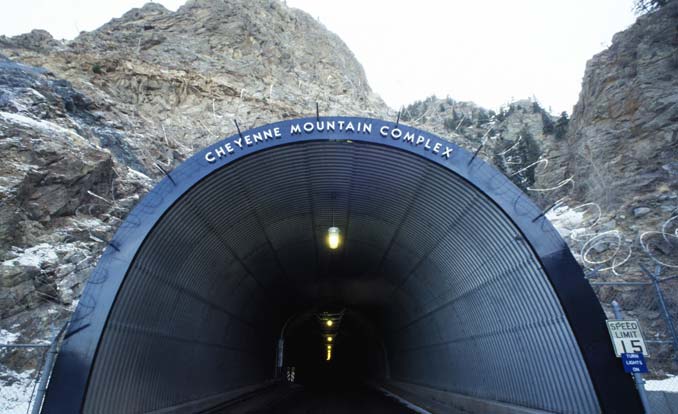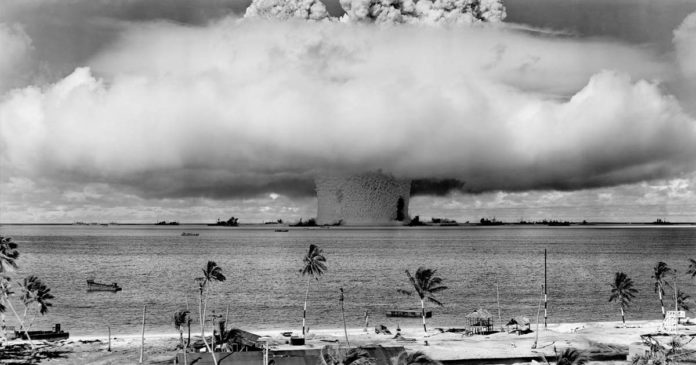
The World Health Organization this week took a break from pushing their 24/7 COVID mass-hysteria program to advise governments around the world to begin stockpiling medicines for “nuclear emergencies”. As the risk of nuclear escalation rises, thanks to the Biden administration and a world full of psychopaths who seem hellbent on pushing us into WW3 with Russia, the World Health Organization (WHO) released an updated “list of medicines that should be stockpiled for radiological and nuclear emergencies, along with policy advice for their appropriate management.”
Dr. Maria Neira, WHO’s acting assistant director-general, said, “In radiation emergencies, people may be exposed to radiation at doses ranging from negligible to life-threatening. Governments need to make treatments available for those in need – fast.”
This report focuses on pharmaceuticals for treating radiation exposure and addresses the governance and management of such a stockpile. According to the new guidance, typical radiation emergency stockpile will include the following medicines:
- Stable iodine is administered to prevent or reduce the exposure of the thyroid to radioactive iodine;
- Chelating sand decorporating agents (Prussian blue, applied to remove radioactive caesium from the body and calcium- / zinc-DTPA used to treat internal contamination with transuranium radionuclides);
- Cytokines used for mitigation of damage to the bone marrow, in case of acute radiation syndrome (ARS); and
- Other medicines used to treat vomiting, diarrhea and infections.
“This updated critical medicines list will be a vital preparedness and readiness tool for our partners to identify, procure, stockpile, and deliver effective countermeasures in a timely fashion to those at risk or exposed in these events,” Mike Ryan, executive director of the WHO’s Health Emergencies Program, says in the news release.
According to the report that explains how to manage radiation and nuclear exposure, many countries are unprepared. “It is essential that governments are prepared to protect the health of populations and respond immediately to emergencies. This includes having ready supplies of lifesaving medicines that will reduce risks and treat injuries from radiation,” Neira added.
This comes as reports surface that the United States is unprepared to fight a major war after depleting many of our strategic stockpiles by sending huge amounts of military equipment to Ukraine and leaving vast amounts of weapons systems in Afghanistan.
Biden regime stockpiling Radiation Sickness Drugs in Case of Nuclear War with Russia
As we reported last October, the Biden administration has already started stockpiling these medications, bringing in $290 Million Worth of Drugs for Radiation Sickness in Case of a Nuclear attack from Russia. At the time we uncovered a dystopian plan where people at NASA and other U.S. government agencies were actually theorizing that a small-scale nuclear war would be a great way to combat global warming — yes these people are really that sick and twisted!
National Geographic, in an article that has since been removed from the internet but can still be viewed via the web archive project, gleefully reported at the time that “After a regional nuclear war, though, average global temperatures would drop by 2.25 degrees F (1.25 degrees C) for two to three years afterward, the models suggest.”
U.S. government secretly preparing for Nuclear Attack for years

After largely abandoning the infamous doomsday bunker, The Cheyenne Mountain Complex, the Pentagon mysteriously reopened the facility in 2015. According to Peter Pry, executive director of the EMP Task Force, a bipartisan congressional commission, the contract to reopen The Cheyenne Mountain Complex was issued to protect sensitive military electronics from a potential EMP attack.
“What it could do, these various threats, is black out the U.S. electric grid for a protracted period of months or years,” warned Pry, “Nine out of ten Americans could die from starvation, disease, and societal collapse if the blackout lasted a year.”
In December 2018, The Department of Homeland Security took the unprecedented step of warning the public that the electric grid was a “prime target” and warned that Americans needed to be prepared for up to six months without electricity, transportation, fuel, money, and healthcare. At the same time, the CDC held a “Public Health Response to a Nuclear Detonation” briefing to prepare the American public for the possibility of a nuclear strike on American soil.
In that report, from the Air Force’s Air University, the military warned an EMP-style attack could wipe out the United States, democracy, and the world order. They also warned that:
- 99 nuclear reactors would likely melt down without electricity to cool them.
- 4.1 million would be displaced from areas around the nuclear plants as the radioactive cloud spread.
- Military and commercial jets, such as those built by Airbus, could be degraded. “Alarmingly, aircraft designed to carry large numbers of people and sizable cargo are allowed to operate without certainty about their level of resilience.”
- Bases would be cut off, making defense and counter-attacks impossible.
- Civil unrest would start in “hours.”
- Power and GPS could go dark. “An EMP would cause instantaneous and simultaneous loss of many technologies reliant on electrical power and computer circuit boards, such as cell phones and GPS devices.”
- “Failures may include long-term loss of electrical power (due to loss of emergency generators), sewage, freshwater, banking, landlines, cellular service, vehicles.”
- Eighteen months or more are required to replace key elements of the electric grid that would be damaged or knocked out.
Surviving a Nuclear Blast
While the thought of a nuclear attack is undoubtedly terrifying, as long as you are not at ground zero, you can survive if you take the right steps. If it’s a lone single blast, those outside the epicenter have a pretty good chance of survival. I advise heading over to our main article on surviving a nuclear explosion and then making sure you and your family are prepared to survive a long-term crisis.


